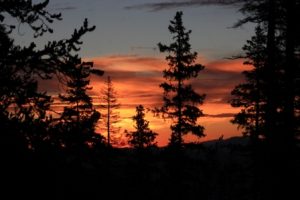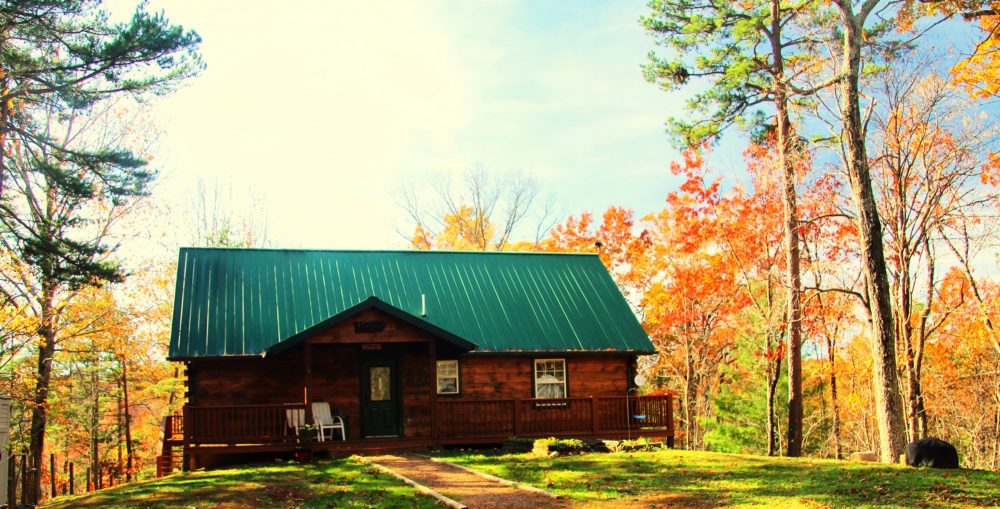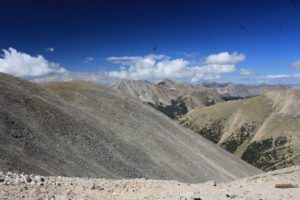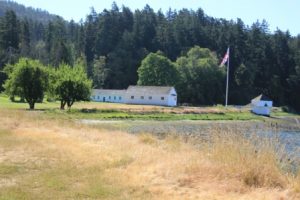Author Archives: Kent
Picture of the Week
Picture of the Week
Motor & Tach Installation
I could NEVER make a living working on boats. The install of a tachometer took a looong time. You get no wiring diagram with a new Mercury motor so you need to study a lot to understand where certain voltages are and how to get them. As luck would have it they actually provided a connection for switched power inside of the ignition switch. That was really nice since many of the functions are now digital. Power for light in the gauge was obtained from an existing lighting circuit in the boat so it will only be on when needed and not glaring in my eyes all the time the motor is running. The signal circuit came from one of the feed wires from the alternator to the rectifier.
After using the motor a few times I didn’t like the original location I chose for dealer installation of the ignition switch so I moved it to a more accessible location in the boat and installed the tach. Doing this meant running the 16 wire cable and the 4 wires required for the tach through the boat in an access channel behind the flotation and compartments. Not an easy or quick task. Took a lot of time but, now it is done. Everything works and proves the prop calculation was correct. We are currently running slightly below the max rpm for the motor at full throttle and that will likely move up just a little as the motor breaks in more or we have a lighter load in the boat.
Fuel consumption is much better than the old motor. The 4stroke sounds different than the old 2 stroke, driving the desire for the tach. Until you get familiar with the sound of a 4-stroke at 5500 rpm it sounds “way too fast”. All is working fine.
Finally!!
The clutch fan on the motorhome shut off as we approached Lake Meredith NRA. It has been on since May 2nd. The reduced noise level is quite pleasing. The fan seems to run when we are above 3,000 feet to support the inner cooler, A/C, transmission cooler and engine. It could have taken a short break around Seattle, based on elevation; but, with traffic and temperatures when we arrived it didn’t. When it does shut down you can hear the rattle of the diesel, the whine of the transmission and tires and the wind noise. Doesn’t seem like that much noise should be something to look forward to. But, it is a relief to only hear the fan run when the radiator needs cooling.
Fuel stop
A bit of surprising good fortune. As we were arriving at the Balloon Fiesta it appeared we might be too low on fuel to run the generator. It won’t run if you are below ¼ of a tank so you can’t run yourself out at a campground. So, we stopped at a station a few miles short of our exit. It had the convenience of a slave pump, woho. We have tanks on both sides and a slave pump allows you to fill both tanks at one time. As we pulled in diesel was priced at $2.099/gallon about 9 cents better than we had seen anywhere else. We pumped our 85 gallons and as we were leaving we noticed the price had gone up to $2.149. Cool!
Mt Shavano
Twenty plus years ago Boy Scout Troop 117 ascended Mt Shavano as part of their “high adventure” program. Lynn and I decided we could do that, so on Tuesday we packed our tent, sleeping bags, meals and water purification pump and headed toward the trailhead. To reach the trailhead is a 1 hour 7 mile trip on some roads defined a “jeep roads”. We were about a mile from our destination and met a fellow who stopped us and explained the road to the trailhead was blocked by cattle that would not move. He was very concerned since he was supposed to pick up his daughter who was hiking the Colorado Trail to this trailhead with little provisions and no shelter from another access point. I told him I was going to give the cattle a try and continued on until sure enough here sat an angus cow with her calf as the first of many laying in the road. A little persuasion with the Focus horn and hand clapping and cowgirl banter by Lynn and the first of many obstacles moved on. Shortly after we made it to the trailhead the fellow arrived there as well. He had followed us, but not close enough, as he had to get out of his truck and physically push one stubborn cow out of the road. So, we made it to the trailhead as did he and I don’t think we stressed those cattle at all.
This time of year thunderstorms are the norm every afternoon so you need to get to the top and back below the treeline by early afternoon. The easiest way to assure that is to split the trip part way up. We hiked up Tuesday and arrived at a camping spot just below 11,000 feet, used by the scouts, safely below the tree line with a good water source. We had camp set up before the thunderstorms started. I was feeling pretty confident since we made the trek from the trailhead to camp in about 2 hours. That only left less than 3 miles to the summit for Wednesday. The alarm went off at 5 with the temp around 40 degrees. We had breakfast by flashlight and were on the trail before 6. The goal for the day, 14,229. Caught a beautiful sunrise  along the trail. This trail may not have seen any maintenance except fallen tree removal since I was here last. It is a jumble of loose 6 inch rock, so every step has to be carefully planned and executed. That’s my excuse and I am sticking with it. Never mind the twenty years that has passed and maybe a few pounds I could stand to lose. We were above the tree line and well on our way when it started to blow and rain (not in the forecast and thankfully not a thunderstorm). We almost turned back after we donned the raingear. If you can image 2 green Michelin men going up the side of the mountain it had to be quite a sight. The raingear is intentionally big enough to cover the daypack and camera. We continued and after a few minutes the rain stopped, although the cold wind continued for another hour or so. Before our appointed turn-back time we made the end of the trail, such as it is.
along the trail. This trail may not have seen any maintenance except fallen tree removal since I was here last. It is a jumble of loose 6 inch rock, so every step has to be carefully planned and executed. That’s my excuse and I am sticking with it. Never mind the twenty years that has passed and maybe a few pounds I could stand to lose. We were above the tree line and well on our way when it started to blow and rain (not in the forecast and thankfully not a thunderstorm). We almost turned back after we donned the raingear. If you can image 2 green Michelin men going up the side of the mountain it had to be quite a sight. The raingear is intentionally big enough to cover the daypack and camera. We continued and after a few minutes the rain stopped, although the cold wind continued for another hour or so. Before our appointed turn-back time we made the end of the trail, such as it is.
The only thing before us was the last few hundred feet of rock scramble to reach the summit. We decided to save rock scrambling for another time. We relaxed on the tundra and enjoyed our celebratory snack then headed down. We stopped in the trees and had lunch then descended, broke camp, and returned to the car parked about 4 miles and 4,000 feet below the summit. Just as we arrived at the car another rainstorm began. Even with the rain showers it was still a great hike though some beautiful country. Maybe just a little harder than I remembered. A big thanks to Lynn for coming along down memory lane!
enjoyed our celebratory snack then headed down. We stopped in the trees and had lunch then descended, broke camp, and returned to the car parked about 4 miles and 4,000 feet below the summit. Just as we arrived at the car another rainstorm began. Even with the rain showers it was still a great hike though some beautiful country. Maybe just a little harder than I remembered. A big thanks to Lynn for coming along down memory lane!
Bad Hat!
A long utilized accessory made another attempt at freedom. In March 2011, I found a hat along the road in Joshua Tree National Park. There was no way to find the owner so it was adopted.  Since that time it has sought freedom along a trail in Delaware Water Gap NP when it stayed on a rock while we continued along the trail. Once it absence was noted I doubled back to find it being washed in a creek by a potential foster parent who returned it. Later in Ontario it stayed on a log after a break and was homeless for 30 minutes until retrieved. This week it stayed on a rock after a hiking break and was homeless for a couple of hours until we returned along the trail to give it a short day of hiking. Over the years it has faded and earned some battle scars, the most notable a hole delivered by Brian and Johnna’s dog Sara when it leapt to freedom while both hands were busy painting. Those battle scars may explain this week’s long freedom while being bypassed by many hikers. It is back home and enjoyed the trails in Craters of the Moon National Monument today.
Since that time it has sought freedom along a trail in Delaware Water Gap NP when it stayed on a rock while we continued along the trail. Once it absence was noted I doubled back to find it being washed in a creek by a potential foster parent who returned it. Later in Ontario it stayed on a log after a break and was homeless for 30 minutes until retrieved. This week it stayed on a rock after a hiking break and was homeless for a couple of hours until we returned along the trail to give it a short day of hiking. Over the years it has faded and earned some battle scars, the most notable a hole delivered by Brian and Johnna’s dog Sara when it leapt to freedom while both hands were busy painting. Those battle scars may explain this week’s long freedom while being bypassed by many hikers. It is back home and enjoyed the trails in Craters of the Moon National Monument today.
Picture of the Week
San Juan Island National Historic Site
The Historical Site covers both American and British military
encampments from a 12 year territorial dispute over the Sand Juan Islands. The treaty establishing what is now the border between Canada and the US failed to adequately address this group of islands. Tensions flared when a British farmer’s pig was shot eating an American’s garden. Eventually arbitration determined the islands were part of the U.S. averting what is known as “the Pig War”.
As the ferry left the terminal toward San Juan Island we met a couple of Washington residents who frequently vacation on the islands. They were gracious with advice on favorite highlights. We saw them again when they came to view sunset at the county park and again on our return ferry. Their advice on island highlights and the little ice cream stand near the ferry terminal were spot-on.
Entering Friday Harbor the ferry sounded the horn repeatedly with a great echo around the harbor.
County Park Campground
 Camping site size and ferry rates led us to leave the RV on the mainland and tent camp for our time on the island. Our campsite had a glorious view of the Haro Strait for whale watching and sunsets.
Camping site size and ferry rates led us to leave the RV on the mainland and tent camp for our time on the island. Our campsite had a glorious view of the Haro Strait for whale watching and sunsets.  We were not disappointed in our viewing for either. The Orcas kept us waiting until late in our visit when 2 of the 3 resident pods of Orcas cruised past. They were feeding with lots of fin and tail slaps and some breaching.
We were not disappointed in our viewing for either. The Orcas kept us waiting until late in our visit when 2 of the 3 resident pods of Orcas cruised past. They were feeding with lots of fin and tail slaps and some breaching. 
 Amazing! Earlier in the week we had a lone transient, migrating, Orca cruise by. These were the first sightings for the month.
Amazing! Earlier in the week we had a lone transient, migrating, Orca cruise by. These were the first sightings for the month.
Roche Harbor has developed on the site of a former Lime Kiln. The destination resort is home to hotels, restaurants, fantastic boats/ships, a carillon and an outdoor art display. They serve a pretty tasty lunch on the pier too!
Back onto Ferry for Lopez Island
Waiting in the ferry line provides time to ponder things. Our ferry was going to Lopez Island and Anacortes, so how do they do that? Let me clarify. You drive onto one end of the ferry and off the other so no one needs to back up. So you could use the various lanes to stage vehicles to disembark at Lopez Island for example BUT anyone coming on at Lopez would be headed the wrong way at the 2nd stop. They handled it by making those destined for Lopez back onto the ferry last. Some were better than others at backing about a block down the ramp and onto the boat.







